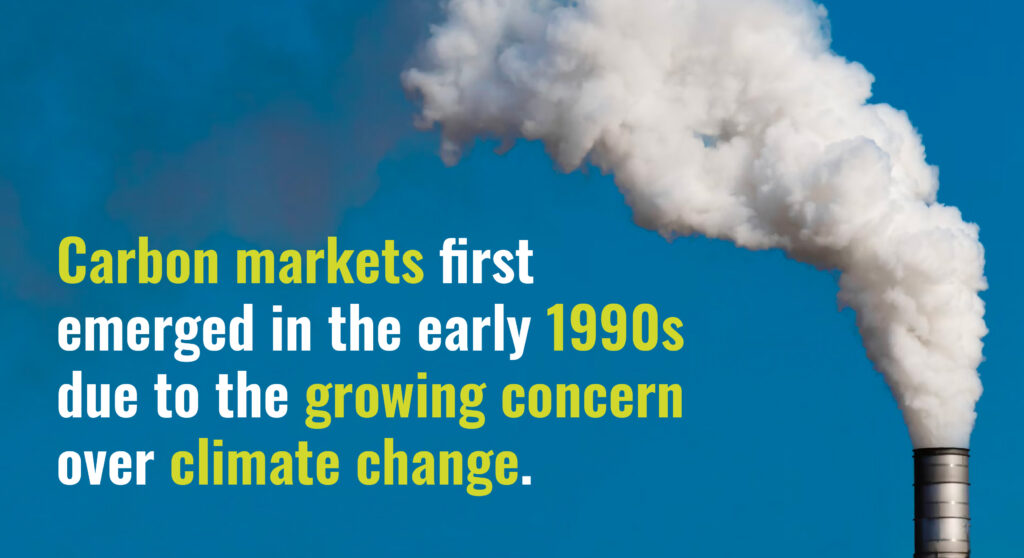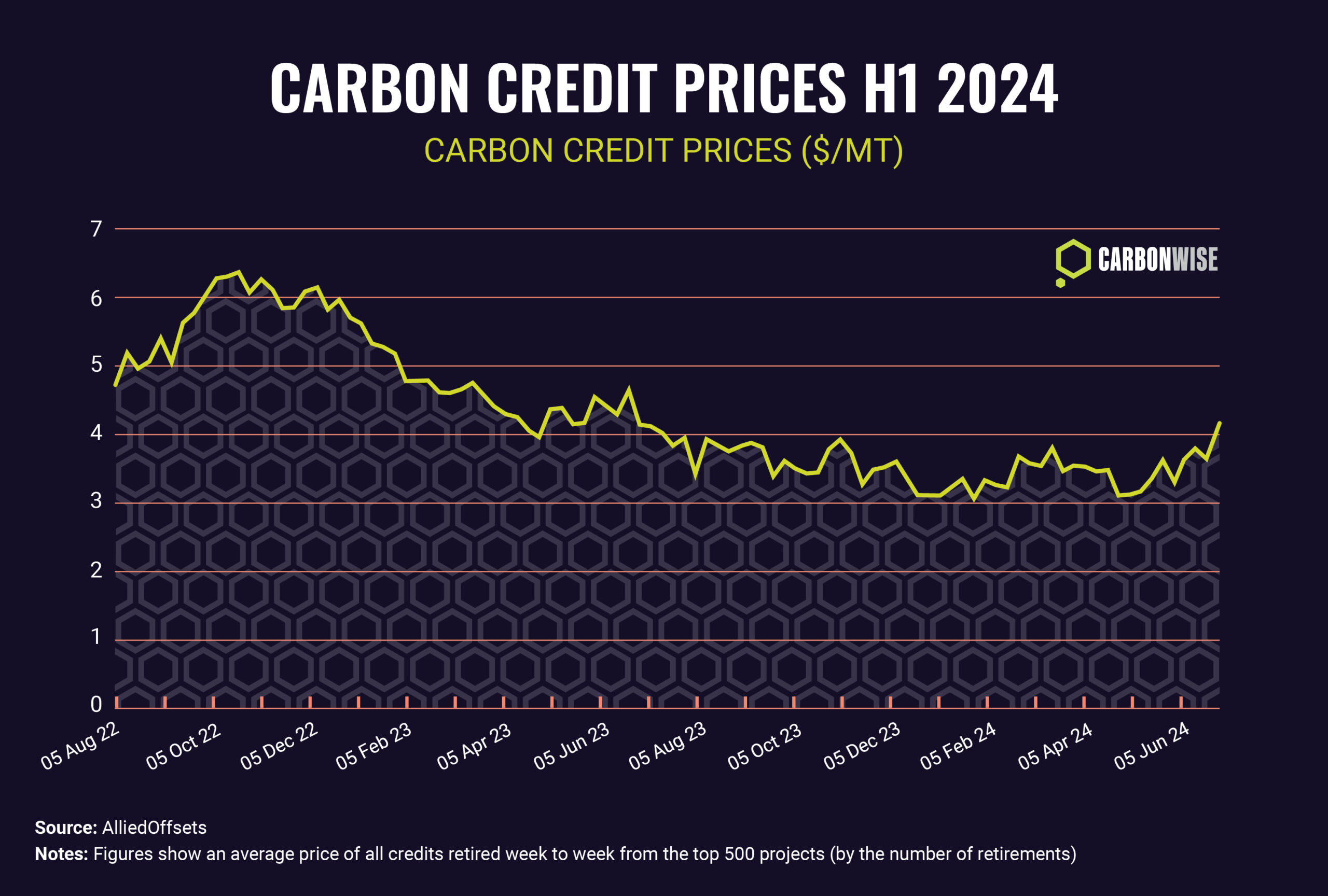Carbon Markets are trading systems established with a need to address climate change and combat the devastating impact greenhouse gas (GHG) emissions are having on the environment.
The idea is centred around the concept of using market mechanisms to incentivise industries to reduce their carbon footprint by putting a price on carbon.
Economic theory believes that by bringing buyers and sellers together in competition, markets allow people and companies to purchase goods or services at the lowest cost. Adapting this theory to reduce greenhouse gas emissions, carbon markets allow companies to reduce emissions at the lowest cost.
Throughout history, there have been costs and impacts of doing business that are not captured in the price of an item or service. When we buy a car, we are buying the various materials and components in the car, as well as the labour to assemble them. But we don’t pay for the impact those materials and components have on the environment.
Similarly, when we use electricity or gas at home, we have historically only paid for the energy and not the impact that energy has on the planet.
Carbon markets aim to make emitters “internalise” that cost, that is, to account for it. By putting a price on carbon emissions, governments require industrial companies to add their environmental impact to their “bottom line”.
Companies can choose to continue emitting and paying for their carbon emissions, or they can invest in clean technology and reduce their environmental costs. And because that investment will be different every time, a marketplace allows companies to come together and find the cheapest way to reduce emissions.
Over time, as those cheapest reductions are found and exploited, and as the limit on emissions comes down, the price of emitting needs to go up. This higher cost of carbon means that more expensive reductions become economical, and so on.
What types of markets are there?
Generally speaking, there are two different types of markets: the compliance market and the voluntary market.
A compliance market is one in which companies are legally required to participate. Most often, compliance markets set an absolute limit on the amount of CO2 that is allowed to be emitted, and companies have to compete to buy the permission to pollute.
The compliance market is run by a regulator that issues permits or allowances and sets the absolute limit on emissions. Companies that can reduce their carbon emissions can either not buy permits, or sell excess allowances on the market. Over time this cap on total emissions decreases, ultimately forcing these companies to reduce their emissions further or to buy additional permits on the market.
If the cost of buying permits is higher than the cost of reducing emissions internally – by shutting down a coal-fired power plant and replacing it with wind and solar, for example – then it is logical that the company would do the latter.
Eventually, the absolute cap on emissions shrinks to zero, ideally signifying that all industry in a jurisdiction has fully decarbonised, and the market can shut down.
Voluntary markets are, as they sound, voluntary. Individuals, businesses and organisations can voluntarily purchase carbon credits to help offset their carbon emissions. There is no legal requirement for participation in these markets. Many businesses use the voluntary carbon market (VCM) to demonstrate their commitment to environmental sustainability and help towards global efforts.
There is no emission cap in a voluntary market, nor is there any legal requirement to make reductions. Instead, companies agree to take on a self-binding target and “internalise” this cost of carbon to drive decarbonisation.
How did the markets start?
In the early 1990s, carbon markets first emerged due to the growing concern over climate change. The United Nations Framework Convention on Climate Change (UNFCCC) was established in 1992 and established the Clean Development Mechanism (CDM). The CDM allowed wealthier, higher-emitting countries to invest in greenhouse gas reduction projects in developing countries, bringing foreign investment and new technology to emerging economies worldwide.
Other countries, such as the European Union, chose to implement mandatory carbon markets to drive their emissions down.

Why do we need the markets?
A recent report by the Intergovernmental Panel on Climate Change (IPCC) said that greenhouse gases are worryingly still rising across sectors globally.
‘Global greenhouse gas emissions have continued to increase, with unequal historical and ongoing contributions arising from unsustainable energy use, land use and land-use change, lifestyles and patterns of consumption and production across regions, between and within countries, and among individuals,’ the IPCC said in its report.
The report reinforced that the increase in greenhouse gas emissions results from human activity. ‘Observed increases in well-mixed GHG concentrations since around 1750 are unequivocally caused by GHG emissions from human activities over this period.’
These concerning statements outline the importance of taking immediate action. The carbon markets, although not the sole solution, provide a means to enable people to do something. If measures can be taken to ensure that the largest emitters are accountable for their contribution, then there is a chance that any further increase can be slowed or, ideally, prevented.

Reducing emissions
The importance of carbon markets stems from the urgent need to reduce emissions. They must act to support the goals of the Paris Agreement to limit global warming to below 2°C above pre-industrial levels and work towards targets set by each nation. The intention is that the markets provide a solution for industries, companies and individuals to reduce their carbon output by encouraging them to invest in projects generating renewables, improving their energy efficiency and supporting carbon capture or storage technologies.
Accessible to all
Increasing access to carbon markets can help improve the pool of active participants, enabling companies to find cheaper emissions reduction options and thereby increasing the system’s efficiency. Having low-cost reduction options is essential to ensure that the cost of reducing emissions does not rise too quickly. In many countries where their industries cannot generate the finance to buy expensive emission-reduction technology, lower-cost options provide a more affordable way to reduce their footprint.
Whilst the markets are just a small segment of the overall solution, they play an essential role in the broader effort to build a more sustainable and resilient society. We must continue to refine, moderate and monitor the markets to ensure a transparent system that is inclusive and fair to all parties involved. However, their aim is clear, and the hope for meaningful emissions reduction is well along the way.





